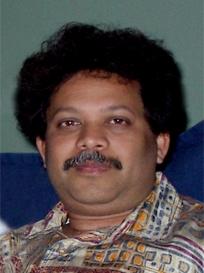Dr. Jaideep Mathur

My fascination, for as long as I can remember, has been with ‘shapes’. As a young biology student, I soon realized that specific shapes are, very often, associated with specific functions. My research career has thus evolved around the dissection of mechanisms underlying shape development, or morphogenesis, in plants. In 1992, after earning a Ph.D. in Botany from India I moved to the Biological Research Center in Szeged, Hungary, to investigate the molecular basis of differentiation in higher plants as part of an International Training Course on Modern Methods in Biology. Soon after I was recruited into the burgeoning field of Arabidopsis Molecular Genetics by Dr. Csaba Koncz and joined the Max-Planck Institute, Cologne, Germany under the directorship of Prof. Jeff Schell. In this august institution, I contributed, as a cell-biologist, to the team effort that led to the molecular-genetic recognition of Brassinosteroids, a group of steroidal hormones in higher plants. My time at the MPI also coincided with the discovery of the Green Fluorescent Protein (GFP) and I was part of one of the first teams to demonstrate GFP applicability in plant research. In 1997 my research took a new direction under Prof. Nam-Hai Chua who introduced me to the delights of the plant cytoskeleton and its role in plant morphogenesis. Three years later I had the opportunity to work at another renowned plant laboratory, the ZMBP at the Tuebingen University, Germany, under Prof. Gerd Juergens. A research-intensive period with Prof. Martin Hülskamp followed at the University of Cologne, Germany. This period resulted in my cloning and characterization of several new proteins including the ARP2/3 complex and EB1-like proteins from plants. In 2003 I came to Canada and joined the University of Guelph next year.
I am a member of the Canadian and American Societies of Plant Physiologists /Biologists, and The Faculty of 1000. I also serve on the Editorial / Advisory boards of the journals - Plant Methods, Plant Signaling and Behaviour, BioMed Central/ Biology Image Library, and the Genome India International Forum (GII).
- B.Sc., M.Sc. Lucknow University, India
- Ph.D. University of Gorakhpur, India
Research in my laboratory is funded by NSERC Discovery and Discovery Accelerated Supplement grants, CFI and Ontario MRI. My work focuses on the cellular and molecular basis of plant morphogenesis. This involves multi-colour imaging of living plants with an emphasis on the cytoskeleton and its regulatory proteins, subcellular cross talk and plant-environment interactions. For more information on my research, click here
Key Research Publications
- Rapid peroxisomal responses to ROS suggest an alternative mechanistic model for post-biogenesis peroxisomal life cycle in plants. J. Mathur. PLANT SIGNALING AND BEHAVIOUR. 4(8): 787-9. 2009.
- Peroxule extension over ER defined paths constitutes a rapid subcellular response to hydroxyl stress. Sinclair AM, Trobacher CP, Mathur N, Greenwood JS, Mathur J. THE PLANT JOURNAL. 59(2):231-42. 2009
- Visualizing the actin cytoskeleton in living plant cells using a photo-convertible mEos::FABD-mTn fluorescent fusion protein. Mike Schenkel, Alison M Sinclair, Daniel Johnstone, J Derek Bewley and Jaideep Mathur. PLANT METHODS. 4: 21:2008.
- Microtubule plus-ends reveal essential links between intracellular polarization and localized modulation of endocytosis during division-plane establishment in plant cells. P. Dhonukshe, J. Mathur, M. Huelskamp and TWJ. Gadella. BMC- Biology.3:11. 2005.
- Actin control over microtubules suggested by DISTORTED2 encoding the Arabidopsis ARPC2 subunit homolog. R. Saedler, N. Mathur, B.P. Srinivas, B. Kernebeck, M. Huelskamp and J. Mathur. PLANT AND CELL PHYSIOLOGY 45(7) 813-822. 2004.
- A novel localization pattern for an EB1-like protein links microtubule dynamics to endo-membrane organization. Mathur et al., CURRENT BIOLOGY 13, 1991-1997, 2003.
- Arabidopsis CROOKED encodes for the smallest subunit of the ARP2/3 complex and controls cell shape by region specific fine F-actin formation. Mathur et al. DEVELOPMENT,130, 3137-3146, 2003.
- Mutations in Actin Related Proteins 2 and 3 affect cell shape development in Arabidopsis thaliana. Mathur et al., PLANT CELL, 15(7) 1632-1645. 2003.
- Simultaneous visualization of peroxisomes and cytoskeletal elements reveals actin and not microtubule-based peroxisome motility in plants. Mathur et al., PLANT PHYSIOLOGY 128, 1031-1045, 2002.
Reviews
- The Illuminated Plant Cell. J. Mathur. TRENDS IN PLANT SCIENCE. 12: 2007.
- Local Interactions shape plant cells. J.Mathur. CURRENT OPINION IN CELL BIOLOGY. 18(1): 40-46. 2006.
- Trichome Cell Morphogenesis in Arabidopsis: a continuum of cellular decisions. J. Mathur. CANADIAN JOURNAL OF BOTANY. 84: 604-612. 2006.
- Conservation of boundary extension mechanisms between plants and animals. J. Mathur. JOURNAL OF CELL BIOLOGY.168, 679-682. 2005.
- The ARP2/3 complex: giving plant cells a leading edge. J. Mathur. BIOESSAYS. 27(4), 377-387. 2005.
- MCB*2210 - Introductory Cell Biology (Co-instructor Rob Mullen)
- BOT*3310 - Plant Growth & Development (Co-instructor Joe Colasanti)
- MBG*6350 - Advanced Topics in Plant Biology (Co-instructor Ian Tetlow)
- Laura Currie (Technician)
- Mariel Burnside (Graduate Student)
- Puja Puspa Ghosh (Graduate Student)
- Thomas Kadanthottu Kunjumon (Graduate Student)